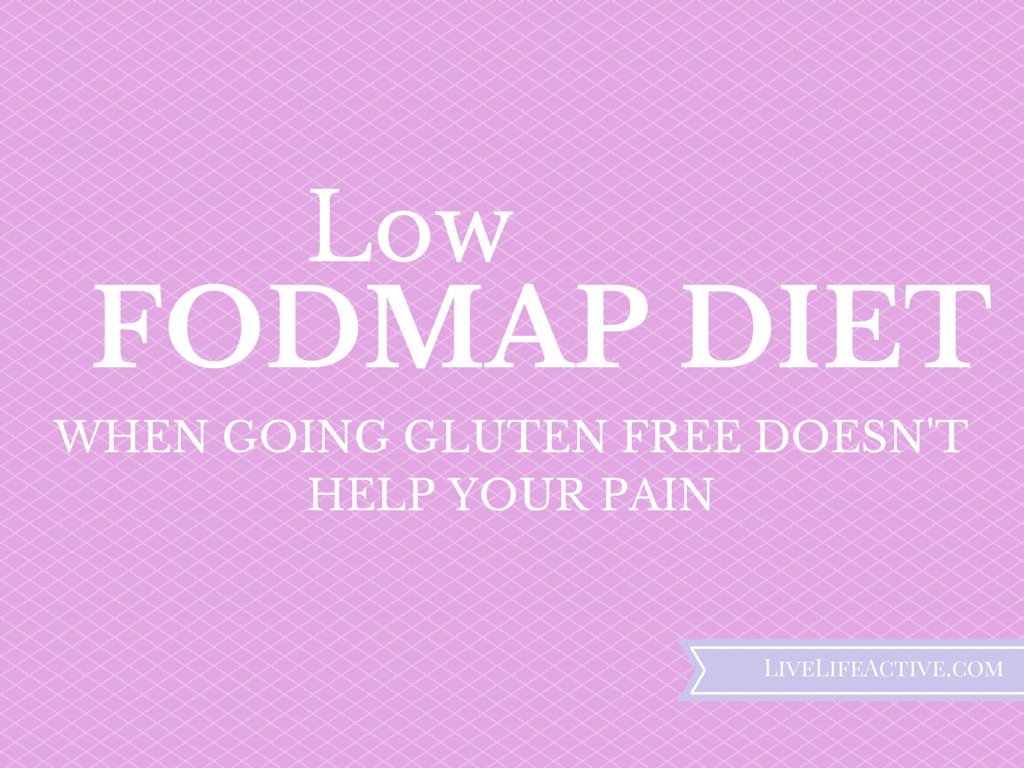In the past few years there has been a lot of talk about gluten. Many people who suffer from stomach pain, bloating and gas have searched for solutions to relieve their pain and more than likely have wondered if they have an intolerance to gluten. Gluten free diets have been suggested (see my other posts about gluten free diets and celiac disease) by eliminating gluten filled foods.
The problem is, many people go completely gluten free but still never find relief. To this point, they were out of ideas.
Dr. Oz brought up an interesting issue recently about Fodmaps.
I had never heard of a low Fodmap Diet until today so I figured I’d share it with you.
Low Fodmap Diet
What is a FODMAP?
In order to figure out the severity of your gluten sensitivity, you’ll need to start tracking and rating your symptoms.
You’ll need to rate your symptoms’ severity from one to five (five is the most severe), analyzing problems such as bloating, stomach pain, and headaches. If your scores are higher than two, talk with your physician and ask about a food elimination gluten-free diet as an option.
Dr. Oz suggests using this chart to rank your symptoms.
Now that you have your symptoms tracked, you may consider following an elimination diet for 10 days to weed out the foods that are causing pain. This diet was referred to as Dr. Oz’s FODMAP elimination diet.
Some of the foods that will be eliminated on the low FODMAP diet are:
- Dairy (Cheese & milk)
- Vegetables (beans, cabbage, cauliflower)
- Fruits (apples, berries, dried fruit, etc.)
- Wheat foods
This diet will also limit fiber because some high fiber foods also contain a high level of FODMAPs.
See the full list below.
- garlic – avoid entirely if possible
- onions – avoid entirely if possible
- artichoke
- broccoli
- asparagus
- baked beans
- beetroot
- black eyed peas
- broad beans
- butter beans
- cauliflower
- celery – greater than 5cm of stalk
- kidney beans
- leeks
- mange tout
- mushrooms
- peas
- savoy cabbage
- soy beans
- split peas
- scallions/spring onions (bulb/white part)
- shallots
Fruits –
- apples
- apricots
- avocado
- blackberries
- cherries
- currants
- dates
- grapefruit
- lychee
- mango
- nectarines
- peaches
- pears
- persimmon
- plums
- prunes
- raisins
- tinned fruit in apple/pear juice
- watermelon
Cereals, Grains, Breads, Biscuits, Pasta, Nuts & Cakes –
(wheat containing products (be sure to check labels)
- biscuits
- breadcrumbs
- cashews
- cakes
- egg noodles
- regular noodles
- pastries
- pasta made from wheat
- udon noodles
- wheat bread
- wheat cereal
- wheat rolls
- barley
- bran cereals
- couscous
- pistachios
- rye
- semolina
- buttermilk
- cream cheese
- cream
- custard
- ice cream
- margarine
- milk – cow, goat and sheep
- sour cream
- yogurt – including greek yogurt
How to follow the Low FODMAP Diet
For 10 days, be sure to not eat any of the foods listed above. This may not be too hard for some because you probably most people don’t eat every food on the list daily. If you see a food on the list that you regularly eat, just cut it out of your diet for 10 days.
After the 10 days, you’ll add one food back into your diet at a time. You can continue eating this food for a few days until you figure out if your symptoms are back or not. If you don’t feel any of your regular symptoms of bloating, gas or stomach pain, you can introduce another food back into your diet.
Using an elimination diet of this sort will help you determine what the cause of your pain and discomfort is.
This is good news for all of you who are frustrated with the process of figuring out what their food intolerance is. After eliminating gluten from your diet and not finding relief, this could finally be your solution to relief!
The idea of eliminating fodmaps has apparently been around for quite some time, but is now just getting attention because Dr. Oz brought it up. Dr. Sue Shepherd developed the low fodmap diet in 1999. According to her website, “She has proven, through her pioneering PhD research, that limiting dietary FODMAPs is an effective treatment for people with symptoms of IBS. The low FODMAP diet has been published in international medical journals and is now accepted and recommended as one of the most effective dietary therapies for IBS.”
What do you think about the low fodmap diet? Do you think you will try it? Leave a comment below!
Images from DrOz.com




Rules are meant to be broken! HARDYHARHAR. No, I tollaty get it though. Like I tell people about me and paleo I love paleo, but only to the degree that it fits my lifestyle. I won’t let it stop me from indulging if I want to nor will I let it stop me from eating things of cultural importance or at big events. I get ya. Good work picking out what does and doesn’t work for you!